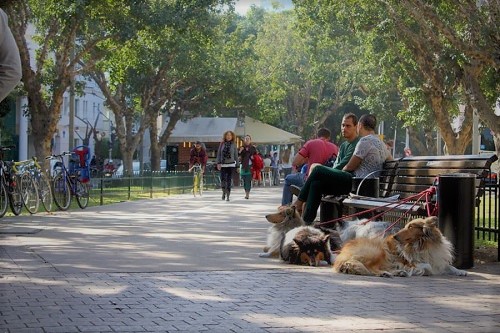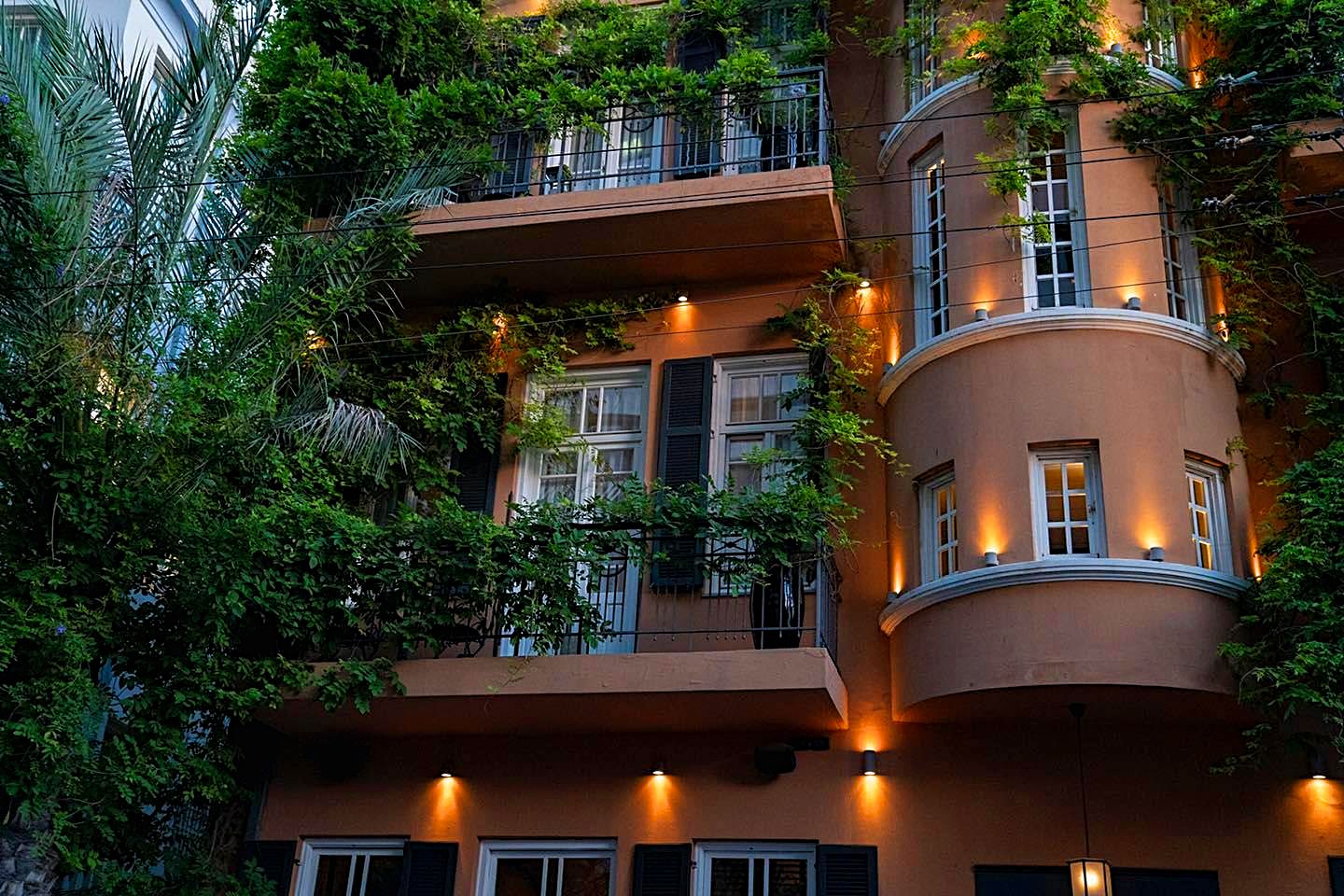Top Tel Aviv Photo Spots: 9 of the Best Instagrammable Places
Vibrant, colorful, youthful and dynamic, few people who make it to Tel Aviv don’t fall in love with the city. Whether you’re dying for some beach time, a foodie who can’t wait to taste some new flavors, an architecture lover who’s curious about the city’s Bauhaus history, or someone who simply loves wandering the streets and capturing the people on them, Tel Aviv offers endless photographic opportunities.Even better, Tel Aviv’s a relatively small city by world standards, and perfect for walking (unlike hilly Jerusalem, it’s flat!).From Levantine food markets and quirky independent cafes to renovated buildings and dreamy beach sunsets, Instagram lovers will be in their element, with perfect captures on every street corner.View of Kedumim Square and St. Peter's church in old JaffaSo if you’re traveling to Israel for the first time, you’re a big fan of the ‘Gram and can’t wait to find some of the best photo locations in Tel Aviv, to make your feed even more exciting and colorful, here are ten spots you really can’t afford to miss:1. Old Jaffa - The Flea Market, the Artist’s Quarter and the HarbourTop of our list - without a doubt - has to be Old Jaffa. Ancient, magical, charming and achingly beautiful, down every small side street and tiny alley you’ll find a new photo opportunity. Jaffa’s history stretches back to Biblical times and as you wander around, you’ll see many old Arabic-style houses, built in the Ottoman era, with stone walls, ornamental windows and carved wood latticework.Rummage at the famous Jaffa flea market (the Shuk ha Pishpeshim) and snap vendors selling their wares, head onto the Artist’s Quarter (and pop into some of the many studios), stroll through Abrasha Park (don’t forget to photograph St. Peter’s Church and the ‘Gates of Faith’ statue) then head down to the port, where you’ll see fishermen patiently sitting with their rods.Jaffa’s so special that the best way to see it really is with someone who knows its history - so why not consider taking a ‘Perfect Tel Aviv Walking Tour’ which is an excellent introduction to the areaA view of Jaffa Old City Port2. Carmel Market - Food Stalls GaloreThe Carmel Market is Tel Aviv’s largest and liveliest market and, in the heart of the city, is a must-see for any visitor to Tel Aviv, not to mention Instagram lovers, because of its endless photographic opportunities, in the shape of hundreds of different stalls, selling everything from fruit and vegetables to local cheeses and breads, and from oriental spices, olives, halva and typical Israeli street food.The market itself is nestled in the Yemenite Quarter (‘Kerem ha Teimanim’) which is a joy to stroll in and take pictures of as well - it’s full of tiny streets, small houses and quirky cafes, bakeries and local eateries, as well as a short walk from Jerusalem Beach. And for anyone who loves food, don’t think twice and book a Carmel Market Food Tour, where you’ll learn all about the history and culture of this terrific spot.Shuk HaCarmel, the most popular market in Tel Aviv3. Frishman Beach - Late AfternoonIt’s truly difficult to pick Tel Aviv’s most Instagrammable beach, because there are so many of them - from surfers at the Hilton Beach to Israeli folk dancers at Gordon Beach and Friday afternoon ‘Shabbat drummers’ at Banana Beach, there’s no shortage of perfect photo opportunities - from sunrise to sunset.But of all the beaches in Tel Aviv, there’s one we love - Frishman. With its powdery white sand, clear turquoise waters, and lovely promenade on which you can stroll, cycle, or Segway, it’s probably the most popular beach in Tel Aviv, and with good reason. The beach cafes there are a fantastic place to order a coffee or lemonade and stare at the Mediterranean before golden hour sets in and you can grab the perfect capture.People enjoy a sunny day on Tel Aviv’s Frishman beach4. Neve Tzedek- Charming BackstreetsNeve Tzedek is, arguably, one of Israel’s loveliest areas and has an illustrious history - it was the first Jewish neighborhood to be constructed outside of Jaffa (in 1883) and in Hebrew, it means ‘The Place of Justice.’ Packed with tiny, winding streets, beautifully restored houses and plenty of upmarket boutiques, cafes and top restaurants, it’s a popular area for tourists to visit.Nevertheless, if you wander its backstreets, you’ll soon realize that its reputation for being ‘a village within a city’ is well-deserved and if you step off the main drag - Shabazi Street - and hit the sidestreets, you may well hear the birds singing! With a rich history and culture, Neve Tzedek is a lovely place to stroll aimlessly and opportunities to find your perfect Instagram capture will not evade you!The streets of Neve Tzedek5. Nachalat Binyamin- Eclectic Street ArtNext door to the Carmel Market lies the buzzy pedestrianized street of Nachalat Binyamin, which is home to a twice-weekly arts and crafts market (where everything is made by locals), beautiful old buildings that have been wonderfully renovated, and plenty of cafes and shops. But the area is home to something else too - some very cool street art!Many of the streets are chock-a-block with murals, colored art and street graffiti, from up-and-coming works by Dede Bandaid to established artists like Rami Meiri (look out for the mural that features two friends standing on a balcony together one playing the violin, the other the accordion). Nor should Instagrammers miss some of the stand-out pieces such as ‘Bubble Girl’. ‘Theodor Herzl Dreaming’ and ‘In Complete.’Real street art aficionados might want to take a Tel Aviv street art tour, to understand the history and politics behind a lot of these pieces.Nachalat Binyamin Street market6. Rothschild Boulevard - Bauhaus GlamourRothschild Boulevard is one of Tel Aviv’s most glamorous walkways, tree-lined, tranquil, full of cyclists, locals, top Tel Aviv restaurants and European-inspired architecture in the form of Bauhaus buildings. This ‘international style’ which came out of 1920’s Germany means Tel Aviv is the Bauhaus capital of the world and thus known as ‘The White City’.A typical Bauhaus building (which always places form above function) will have classic modernist elements - think curved balconies and ribbon windows (Corbusier style) to white exteriors and outdoor communal spaces. This part of Tel Aviv is older than others, a more historic area, and wandering Rothschild and the surrounding streets provides endless Instagram moments.Meir Dizengoff statue, at the Rothschild Boulevard7. Dizengoff Square - the Iconic Dizengoff FountainDizengoff Street is Tel Aviv’s most famous walkway and in its heart sits a square that is home to the iconic Dizengoff Fountain. Designed by the Israeli architect Yaakov Agam, the municipality has put a lot of time and money into renovating the square and setting up shady areas, where you can pull up a free chair and start snapping.Not only is it the perfect place to find ‘cityscape’ opportunities for Instagram, but there are some beautifully restored Bauhaus buildings on the square, notably the striking Cinema Hotel. Once a cinema (there are artifacts from the 1950s, including a projector, which you can see in its lobby), it now offers ‘boutique’ accommodation and its curved white balconies will make your followers swoon. Head up to the rooftop if you want fabulous urban views.Aerial view on Dizengoff Square, Tel Aviv8. Bialik Square - City HallBeyond Dizengoff, you’ll find some beautiful squares in Tel Aviv and one of them that’s perfect for photographing is Bialik. It’s a lovely old street in Tel Aviv, where many of the European Jews who arrived in the early 20th century set up home, and in recent years the area has transformed, with lovely renovated residential buildings and the beautiful Bialik Square at the bottom.Home to the city’s first town hall, today this beautiful building is a museum (after you’ve finished photographing, feel free to pop inside and enjoy the free exhibition, then grab a cup of coffee in their garden cafe). Bialik Street is also where you’ll find the Nachman Bialik House (a pioneer of modern Israeli poetry) and the Rubin Museum (a Romanian-corn artist who drew landscapes of the Holy Land, today referred to as the ‘Eretz Israel’ style). They both afford great Instagram captures.Exterior view of the Beit Ha'Ir museum, the old city hall building of Tel Aviv, located on Bialik Street9. The Namal Port - Mediterranean VistasIf you’re looking for some classic Tel Aviv waterfront photos, then head north to the Namal (the Hebrew word for ‘port’). In the last two decades, it’s undergone enormous renovation and now is an incredibly popular spot for locals and tourists alike, boasting all kinds of restaurants, nightclubs, shops, and cafes that can keep you busy for hours.With a chilled vibe and distinctive wooden deck that acts as a promenade, a gourmet indoor market (and local farmer’s market every Friday morning), at the weekend it’s particularly buzzy (it’s ideal for young families since there’s a ‘Skyjump’ for older kids and carousel for the infants, it’s the perfect place to find that special Tel Aviv Instagram spot.View of the Tel Aviv PortFinally, if you’re traveling to Israel and want to make the most of your time in the country, we offer a wide range of day trips, which can take you from Jerusalem and the Dead Sea/Masada fortress to the Crusader city of Akko, the pastoral hills of the Galilee and the lush and dramatic Golan Heights.














